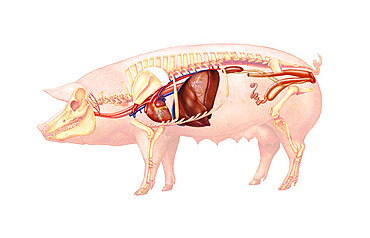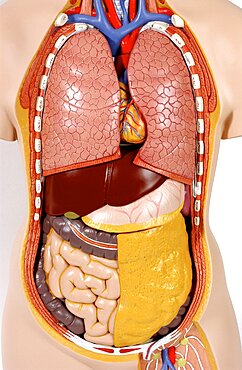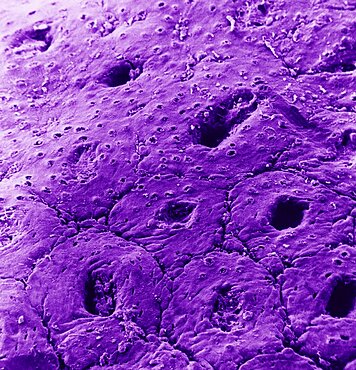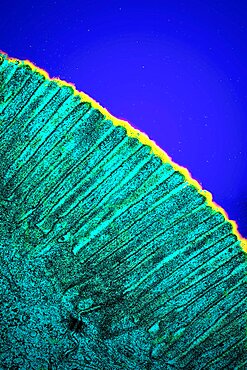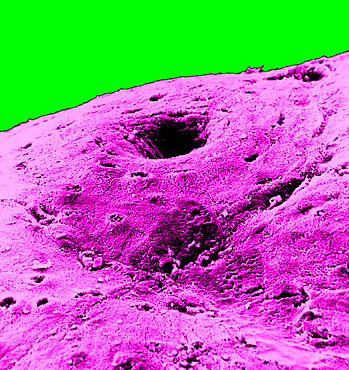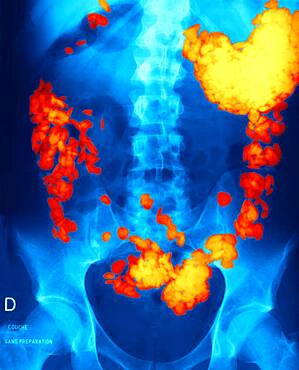Recent searches
Loading...
1348-5363 - Anatomy of the cow digestive apparatus. From left to right: mouth and esophagus, the reticulum (brown excrescence on the left), the rumen or composed paunch, from the top to the bottom by the dorsal sac, the cranial sac and the ventral sac. The grey excrescence beneath is the abomasum or velles.
1348-5365 - Anatomy of a sow. From left to right: the heart, the digestive system with liver, pancreas, spleen and stomach. Underneath the ureters and from left to right : ovaries, oviducts, uterus and vagina. Above, the terminal part of the digestive tube (colon) with the rectum.
1348-1872 - Diaphragmatic hernia. Following a trauma, the left diaphragm has burst. The upper area of the stomach and colon have passed through the wound into the thorax.
1348-1873 - Diaphragmatic hernia. Following a trauma, the left diaphragm has burst. The upper area of the stomach and colon have passed through the wound into the thorax.
1348-1976 - Colon mucosa in SEM x 600. The colon mucosa is constituted of an epithelium, glands, a connective tissue
1348-1870 - Diaphragmatic hernia. Following a trauma, the left diaphragm has burst. The upper area of the stomach and colon have passed through the wound into the thorax.
1348-1975 - Colon mucosa in SEM x 600. The colon mucosa is constituted of an epithelium, glands, a connective tissue
1348-1974 - Colon mucosa in SEM x 600. The colon mucosa is constituted of an epithelium, glands, a connective tissue
1348-1871 - Diaphragmatic hernia. Following a trauma, the left diaphragm has burst. The upper area of the stomach and colon have passed through the wound into the thorax.
1348-1649 - Gastric pains. Stomach of a patient having swallowed pebbles.
1348-1650 - Gastric pains. Stomach of a patient having swallowed pebbles.
1348-1327 - Patient having ingested a tineless fork. The stem of the fork, located in the stomach cavity, shows holes due to the corrosive action of the stomach's hydrochloric acid. The head of the fork has pierced the greater curvature
1348-1328 - Patient having ingested a tineless fork. The stem of the fork, located in the stomach cavity, shows holes due to the corrosive action of the stomach's hydrochloric acid. The head of the fork has pierced the greater curvature
1348-1326 - Patient having ingested a tineless fork. The stem of the fork, located in the stomach cavity, shows holes due to the corrosive action of the stomach's hydrochloric acid. The head of the fork has pierced the greater curvature
1348-1648 - Gastric pains. Stomach of a patient having swallowed pebbles.
You reached the end of search results

